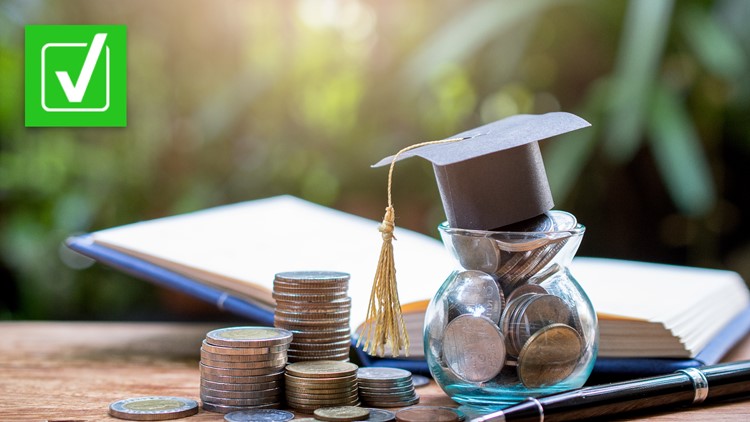UPDATE (1/17/23): The Department of Education has extended the deadline to consolidate from Dec. 31, 2023 to April 30, 2024. The story has been updated to reflect the new deadline.
Earlier this year, the U.S. Department of Education announced it would make a one-time adjustment to how income-driven repayment (IDR) plans and Public Service Loan Forgiveness (PSLF) plans would count past credits towards student loan forgiveness. Borrowers typically get credits towards forgiveness by making a certain number of payments on their student loans.
But there are some borrowers who need to take action on their accounts before they can get the full benefits of the one-time adjustment. Some people on social media are wondering whether they need to consolidate certain loans before 2024 or later in order to qualify for the adjustment.
THE QUESTION
Do some student loan borrowers need to consolidate their loans by April 30, 2024 to qualify for the one-time payment adjustment?
THE SOURCES
THE ANSWER
Yes, some student loan borrowers need to consolidate their loans by April 30, 2024 to qualify for the one-time payment adjustment.
WHAT WE FOUND
Borrowers on income-driven repayment (IDR) plans and Public Service Loan Forgiveness (PSLF) plans can have their student loans forgiven after making payments or receiving credit for a certain number of monthly payments. For IDR plans, that’s usually equivalent to 20 to 25 years of payments. For PSLF plans, that’s 10 years of payments.
The one-time student loan payment count adjustment gives qualifying student borrowers credit toward forgiveness for months borrowers previously didn’t receive credit for. This means the adjustment could give some borrowers enough credit to earn student loan forgiveness, while bringing other borrowers closer to forgiveness.
You can find more information about what the adjustment now counts towards your forgiveness here.
All Direct Loans and FFEL or Perkins loans owned by the Education Department are eligible for the one-time student loan payment count adjustment, the National Consumer Law Center (NCLC) says. Borrowers with these loans don’t have to do anything to have their payment count adjusted, although some borrowers might not hear anything about it until 2024, the NCLC says.
But borrowers who have commercially managed FFEL, Perkins, or Health Education Assistance Loan (HEAL) Program loans need to apply for a Direct Consolidation Loan before the end of April to get the full benefits of the one-time account adjustment, the U.S. Department of Education says.
Commercially managed student loans are loans backed by the federal government but given out and held by private lenders. Most FFEL loans fit this definition, although a few are directly held by the Education Department.
Consolidating allows you to combine one or more of your federal student loans into one loan called a Direct Consolidation Loan. The Department of Education allows student borrowers to apply for consolidation for free on the Federal Student Aid website.
“Through your completion of the free Direct Consolidation Loan Application and Promissory Note, you will confirm the loans that you want to consolidate and agree to repay the new Direct Consolidation Loan,” the Education Department says. “Once the consolidation is complete, you will have a single monthly payment on the new Direct Consolidation Loan instead of multiple monthly payments on the loans you consolidated.”
The Education Department estimates it takes 30 minutes to fill out the application. You will need your FSA ID, your personal details, your financial information and your loan information, including your loan type, loan servicer, loan amount and interest amount.
While you can consolidate your loans beyond the end of April, you must apply for consolidation on or before April 30, 2024 to get the full benefits of the payment count adjustment, the Department of Education says.
Additionally, borrowers in default will have to exit default to receive the full benefits of the account adjustment. However, borrowers in default have a longer deadline based on the Department of Education’s Fresh Start program, which is a one-time Education Department program to give borrowers exiting default special benefits.
“Borrowers who exit default prior to the end of the Fresh Start period will receive the full benefit of the account adjustment and receive credit for periods in default from March 2020 through the month they exit default,” the Department of Education says.
The Fresh Start period continues for a year after the end of the student loan payment pause, says NSLP, a nonprofit student loan guaranty agency in the FFEL program. The payment pause officially ended Aug. 30, 2023, which means borrowers in default have until Aug. 30, 2024 to exit default and receive full benefits for the one-time student loan payment count adjustment.



